You have the opportunity to reduce your greenhouse gas emissions, improve your health, reduce waste, and save water, even if you live in a city. How?
By building your own balcony or rooftop food garden.
By 2050, it’s estimated the world’s population will increase by more than 35 percent. To realistically feed everyone, the world’s crop production would need to double.
But placing that burden entirely on farmers when more than 55% of people now live in urbanized areas isn’t practical – nor is it necessary! Step out onto your balcony or patio, and you’ve found a perfect setting to grow food.
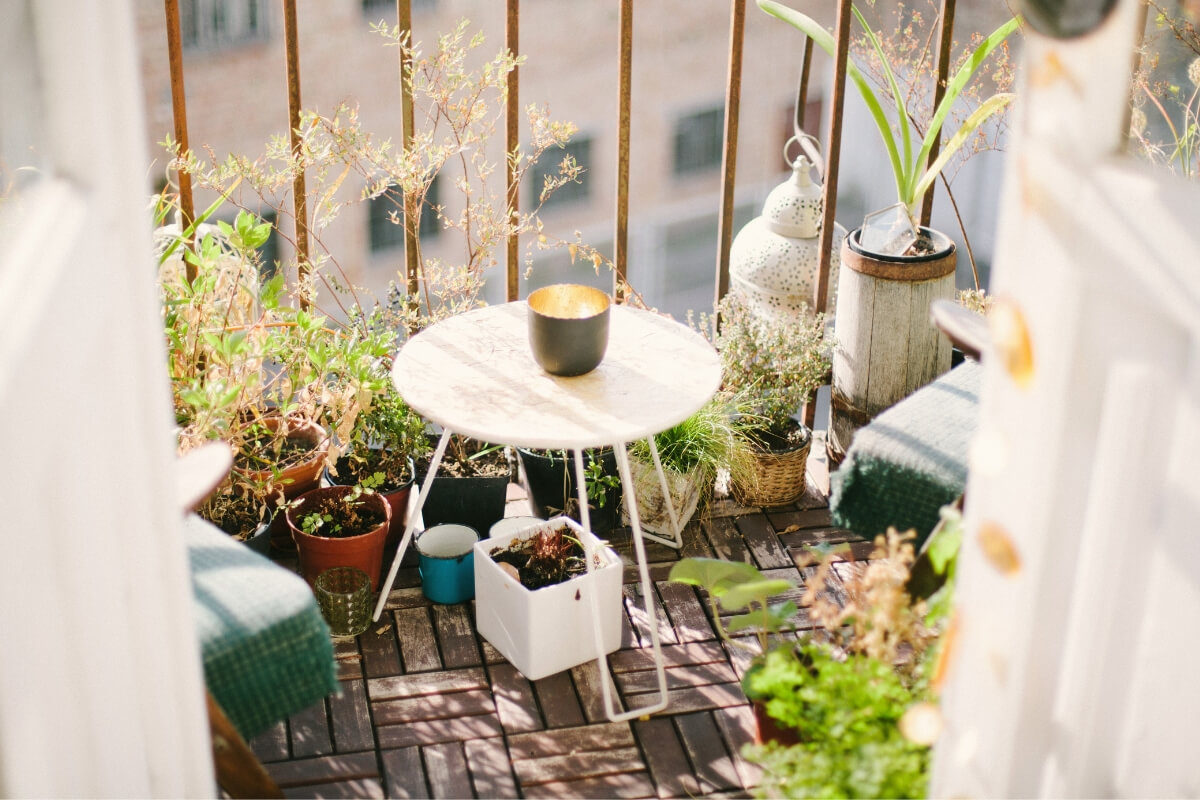
Not only is gardening an enjoyable and therapeutic activity, but it can help you reduce the 8% of your carbon footprint that comes from food consumption. Since you probably won’t raise any cattle on your balcony, having a garden might also encourage you to eat more vegetarian meals. Eating even one vegetarian meal a week can save the greenhouse gas equivalent of 1,160 miles of driving per year.
In general, starting a balcony or rooftop food garden is a win for you, the planet, and humankind. Even if you live in the middle of a city, you can step onto your balcony and pluck off some produce, saving a trip to the store.
Ready to sink your fingers into some dirt?
Getting Started
1. Consider Growing Conditions
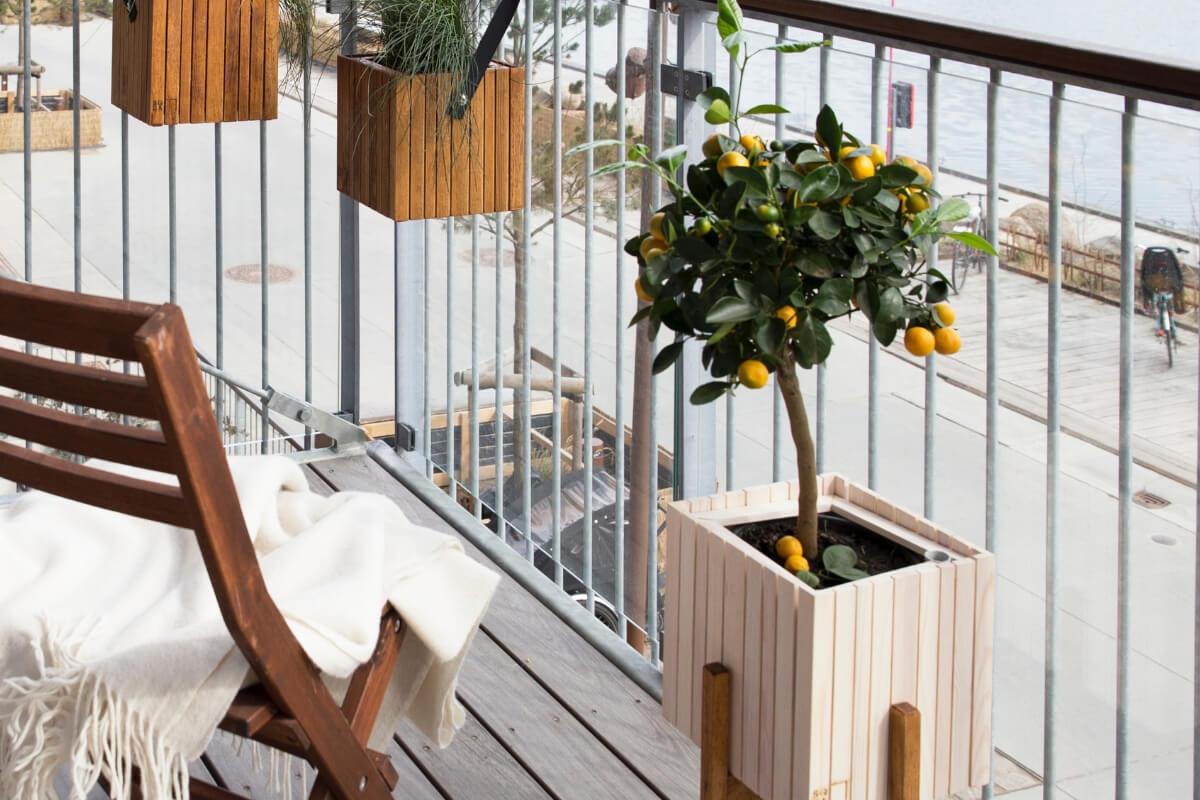
There’s a lot to consider when first planning your balcony garden. You might be tempted to dive in and throw some dirt around, but before you do, think about:
- The amount of sunlight your gardening area receives
- The typical temperature of your balcony or rooftop; some can be burning hot
- How much wind your garden will compete with
- The care and time commitment you’re willing to give
With these considerations in mind, plan your garden accordingly. If your balcony is baking hot or usually shady and chilly, select the right plants for those conditions.
And there’s no such thing as a maintenance-free garden. Growing food is enriching, but it’s understandable if you don’t want to spend a lot of time with your garden after long days at work.
Take into account all of the conditions of both your growing area and your lifestyle. Doing so will allow you access to healthy, productive plants and give you the highest enjoyment out of the gardening process.
2. Think Vertical
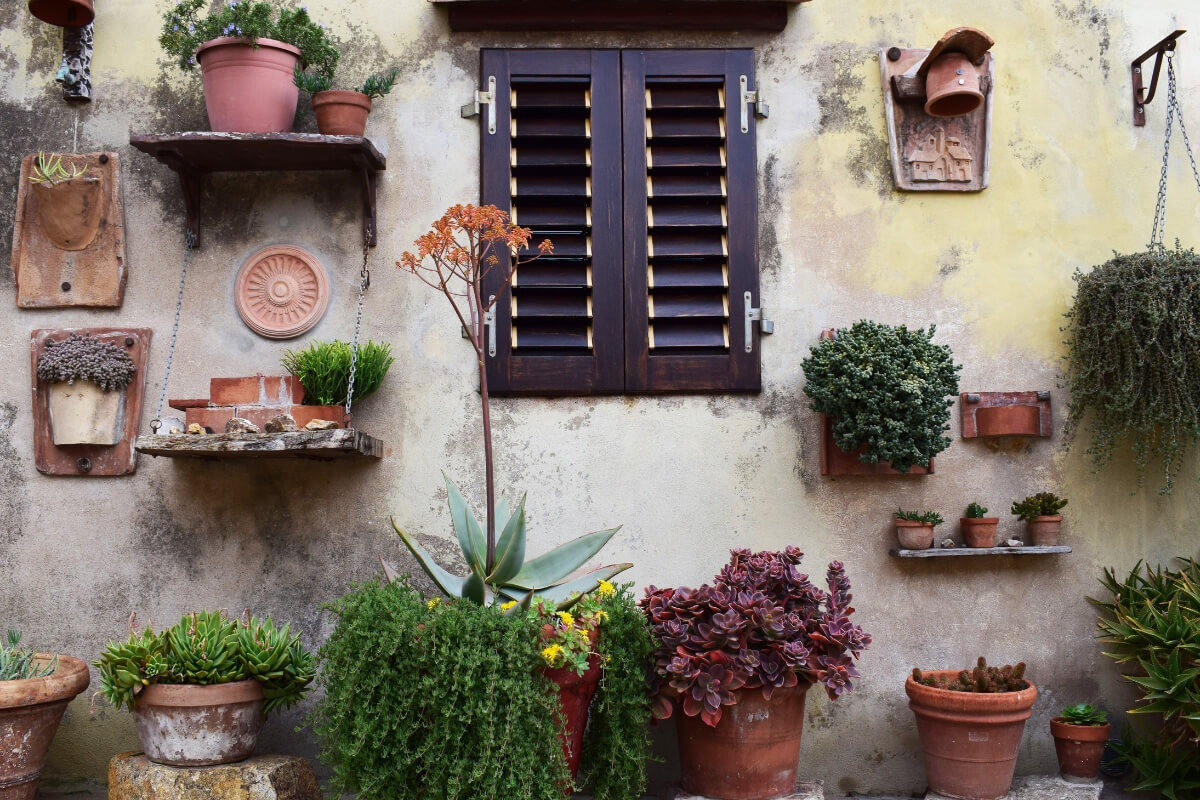
Grow up! Balconies might not offer a lot of space on each side, but you can build upwards and outwards to maximize your use of the area.
Vertical gardening is a great practice that fits a lot of plants in a small space. Consider a ladder shelf with pots on each rung, wall planters, stacking planters, and hanging baskets attached to an overhang or the bottom of the balcony above you.
You can also expand outwards if your apartment allows it. Install railing planters – you can easily attach them with some outdoor zip ties – to create additional growing space. Just check with your apartment owner before installing anything.
Vertical gardening doesn’t have to be expensive, either. You can DIY much of your planting area. Consider using a wood pallet attached to the wall as a planter or cut out circles in boards that you attach to the wall. Slide pots into each of the holes, and you’ve created a functional and beautiful vertical planting space.
And if you love DIYing for the cost savings and efficient use of resources, make sure you upcycle, too.
3. Upcycle
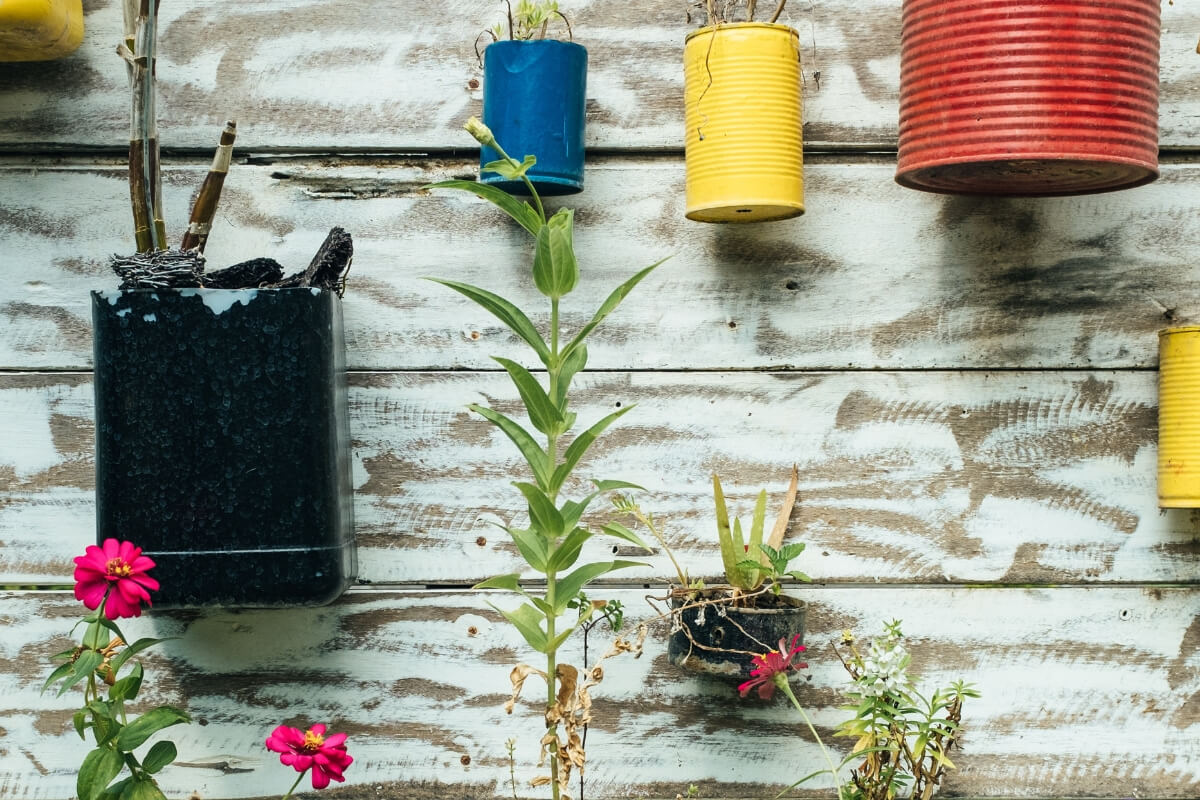
Upcycling is another efficient way to make use of your outdoor gardening space at a low cost while maximizing your eco-friendliness. Instead of rushing to the store to buy planters or pots, you can likely get handy with items you already own.
If you don’t want to sacrifice furniture or dishes to the elements, that’s okay. Instead, you might want to peek at your trash.
There are a lot of surprising and simple ways to upcycle items for your balcony garden that may otherwise go into the trash or recycling bin:
- Use old paint cans as planters for herbs; don’t forget to drill a hole or two for drainage
- Pull drawers out of an unused dresser to use as raised beds
- Repurpose an old picture frame into a shallow growing space
- Transform a metal colander into a planter
- Create an herb wheel using bricks and soil
- Pack an old pair of rain boots with soil and grow where your feet used to go
- Start seedlings in old egg cartons before transferring to the garden
- Place an old step ladder outside and pile on the pots
- Your former hanging shoe holder (the pocket kind) offers a dozen planters in one
- A pallet lying around makes a useful vertical planter
Get creative! There’s a lot of upcycling options for your balcony garden. Just be mindful of using plastics or tires for growing food. Toxins in these materials may not make them ideal for plants you’ll eat, but they can make lovely upcycled planters for inedible flowers or succulents.
Stick with metal, wood, and brick when upcycling, and your DIY food garden will come together in no time.
4. Get the Right Supplies
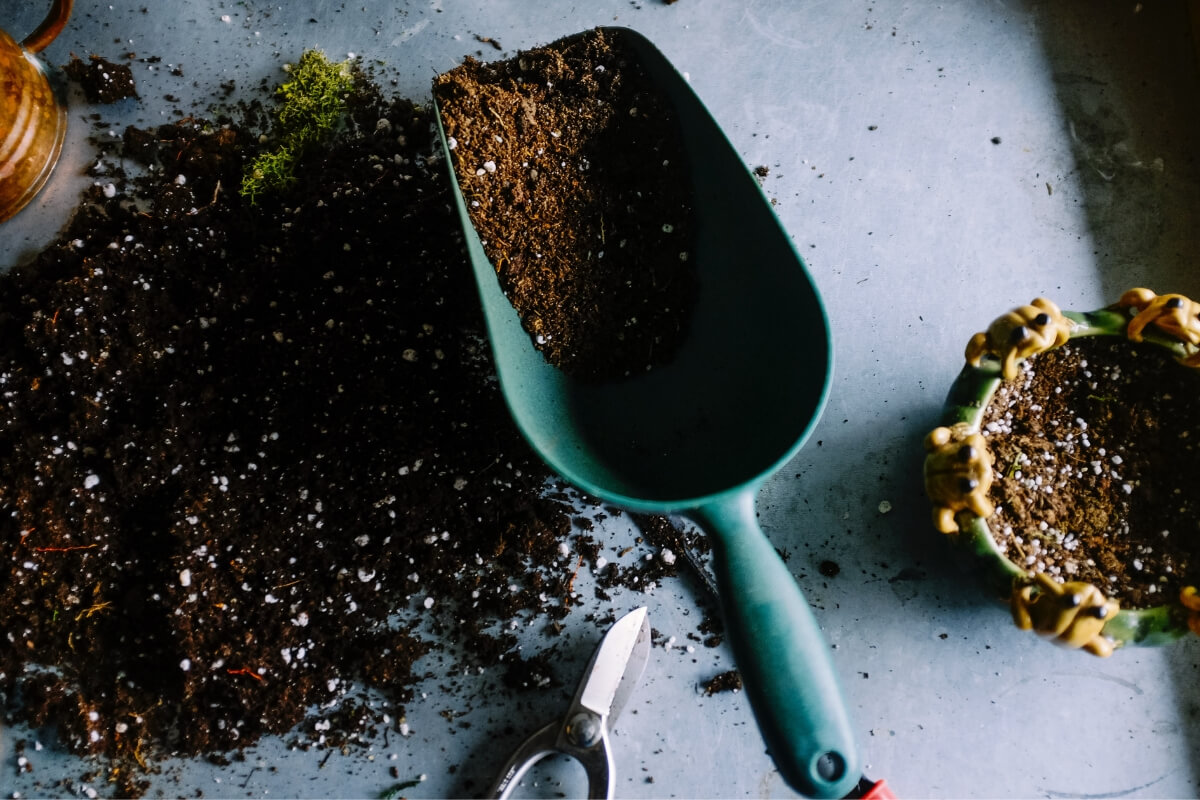
While you can upcycle or DIY your planters, this may not be an easy option for you. No problem – just grab the right supplies.
To start your balcony garden, you’ll need high-quality soil and large planters with adequate drainage. Consider other items like a watering can, trowel, or gardening gloves.
The right pots for a balcony vegetable garden should hold a soil depth of at least 8 inches. Containers must allow for drainage and be wide enough to accommodate the different plants you want in them and how wide each of those plants will spread.
For example, a single squash plant can quickly cover 2 feet of space in a container. It’s wise not to overcrowd spreading plants. Do your research ahead of time.
You can also promote drainage by drilling holes in the bottoms of pots, placing fine gravel in the bottom of your containers, and covering the gravel with a durable wire mesh.
Soil makes a difference, too! Loose, light, and well-draining soil is ideal for balcony gardens.
Seek soil that’s organic, nutrient-rich, likely to retain moisture, and won’t easily compact. Soils containing beneficial mycorrhizae and other nutrients are a great option.
When browsing soils, you may come across options with beneficial substances such as vermiculite. Well done! Mineral aggregates like vermiculite help with aeration and nutrient retention.
5. Plan Before Planting

Throwing seeds or plants together won’t get you the results you’re looking for, especially when working with compact space. Plan before you plant to get the most use out of your area and save yourself later hassle.
Make a quick sketch of where you want to place containers, their sizes, and the spacing of seeds or starter plants in each. This will give you a helpful template to follow as you set up your garden.
For each planter, you can also consider conditions at its location, like sunlight, wind, and even accessibility. Don’t plant short herbs in your highest pot – you might need a step stool to reach them!
Sketching out your balcony garden plan is especially wise if you’re DIYing or upcycling containers. You can plot out the exact sizes of the wood pallets, boards, bricks, or pots you’ll need to fill your balcony to the brim.
And as you’ll see later in this article, you can figure out companion planting before you get the seedlings in the soil. On your diagram, mix and match plants that won’t mind being close to each other.
Pick Your Plants
Just because you don’t have a lot of space doesn’t mean you should limit your balcony garden! Your favorite veggies and herbs can likely thrive in your small area.
To create a happy garden that produces long-term, pick your plants carefully.
1. Starter Plants Versus Seeds
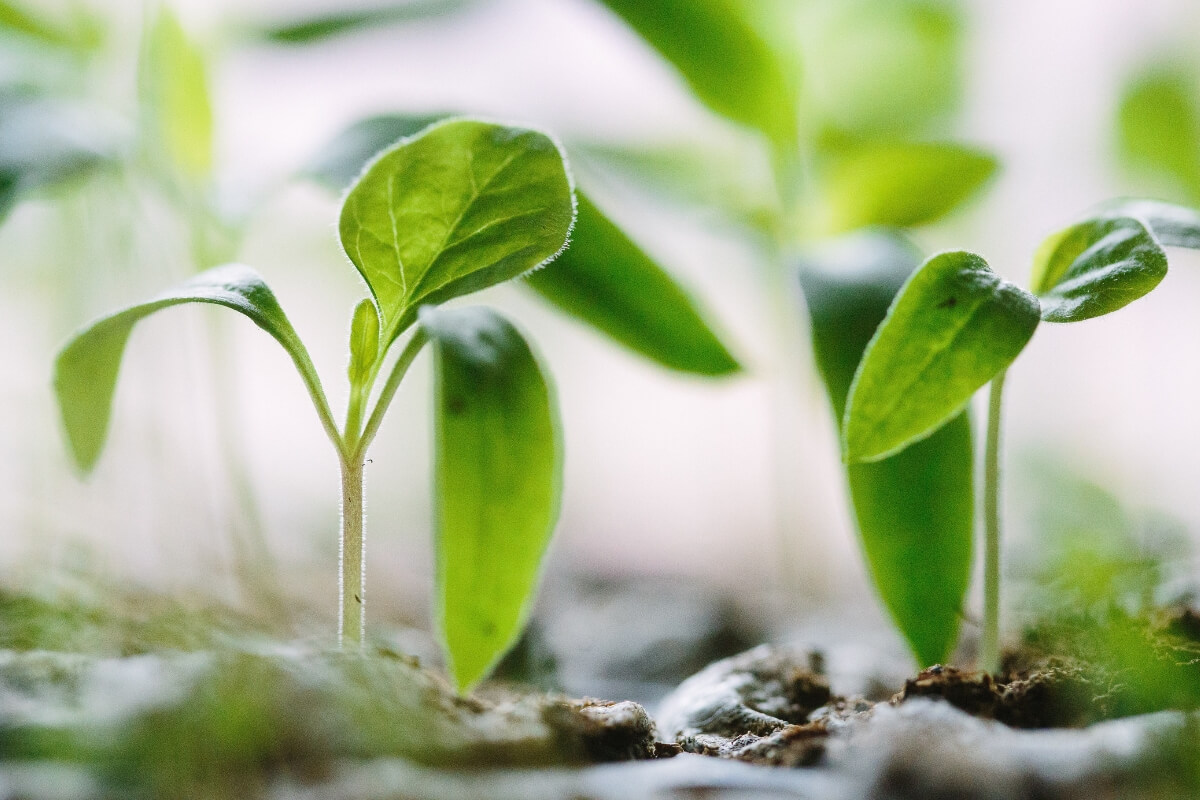
If attempting a balcony garden is new to you, it may be wise to get a head start using seedlings.
Transplanting your vegetables and herbs from a reliable supplier or organic greenhouse starts you off with healthy young plants and lets you harvest sooner.
You can select plants that look healthy, and it’s also much easier to space seedlings out in your containers, unlike with seeds.
2. Partial or Low Sun
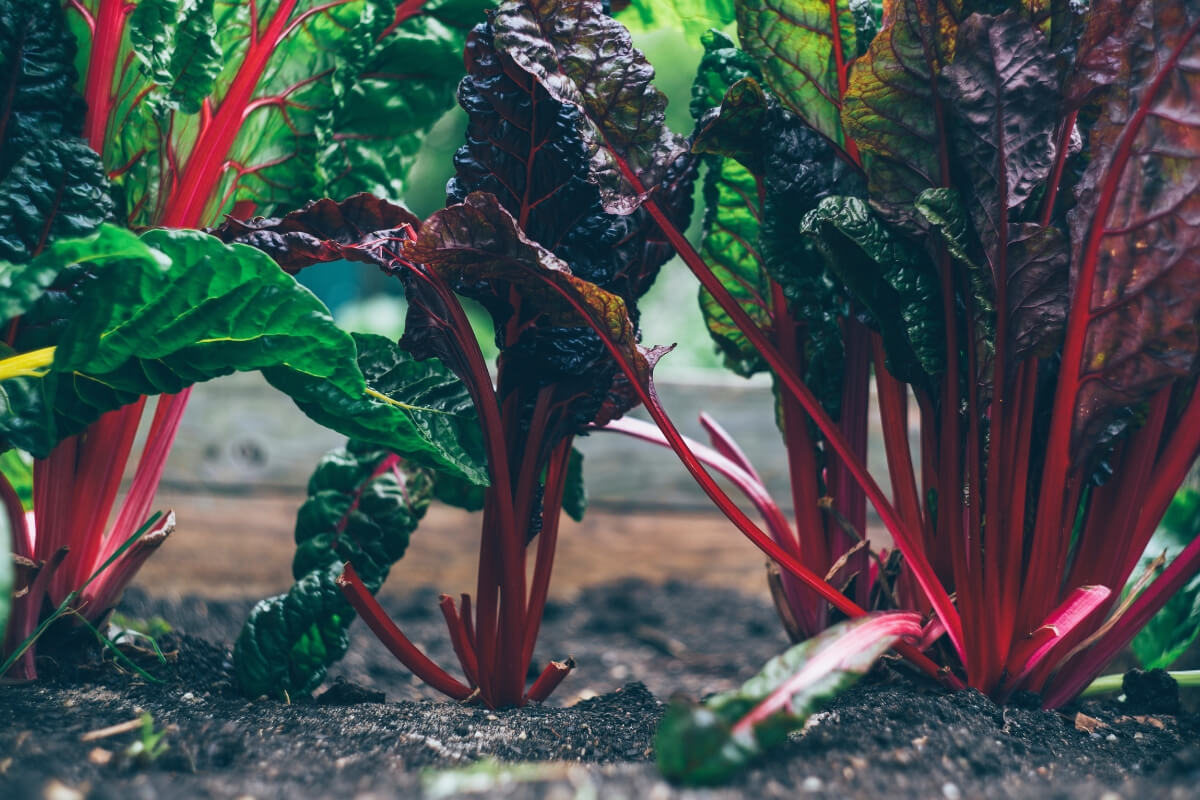
If you enjoy a shaded balcony or your apartment doesn’t receive a lot of sunlight, consider vegetables and herbs that don’t require a lot of light.
It’s worth noting that almost all of the plants in your garden will still require at least 4 to 6 hours of sun every day. Even when selecting partial or low sun options, try to plan for as much light as possible.
Plants that won’t protest shady conditions include:
- Salad greens like lettuce and spinach
- Leafy greens like kale and collards
- Brassicas like broccoli, cauliflower, and cabbage
- Root veggies like carrots, potatoes, and turnips
- Herbs like mint, cilantro, parsley, and chives
- Peas
- Beans
- Celery
- Onions
- Ginger
3. Sun Lovers
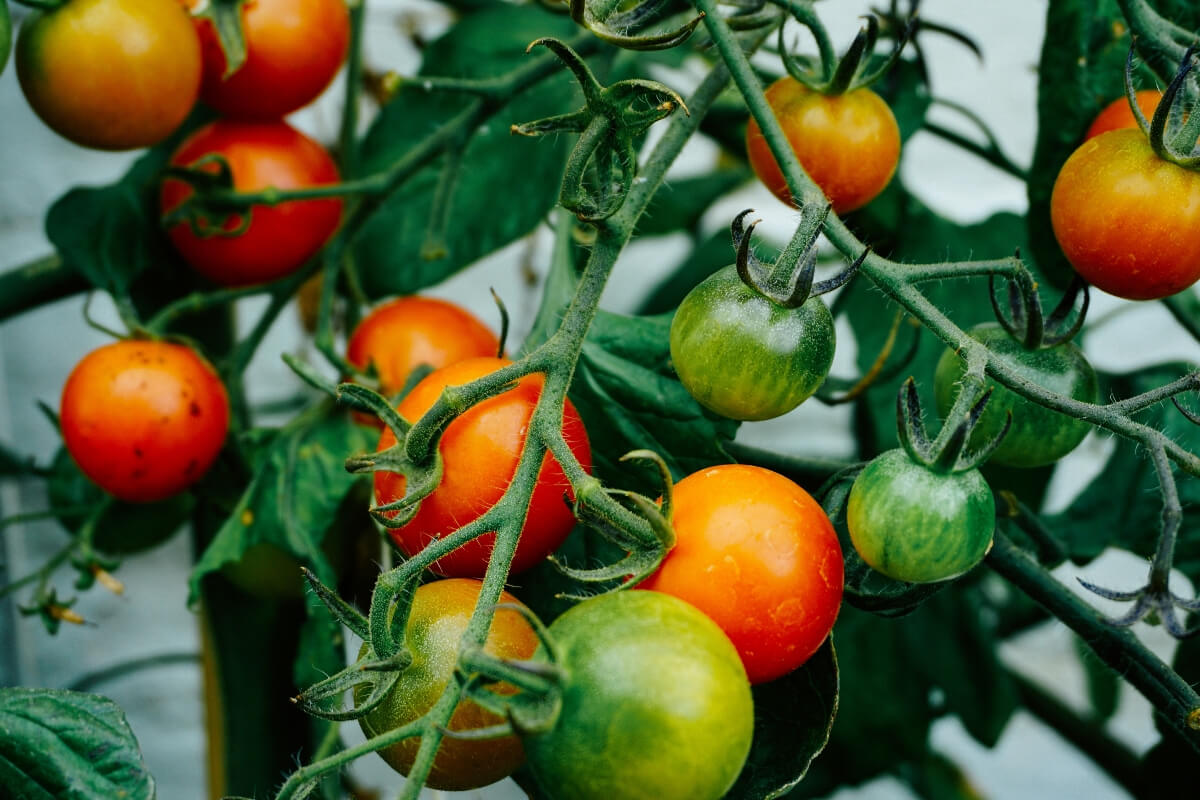
For those with sun-drenched balconies, this is your list! These herbs and veggies would love for 6 or more hours of sunlight each day, and they’ll be able to survive the heat if your balcony gets baked.
Try out:
- Herbs like sage, rosemary, thyme, basil, and dill
- Melons like watermelon and cantaloupe
- Fruits like tomatoes, cucumbers, peppers, and eggplant
- Squash varieties
- Corn
4. Companion Planting
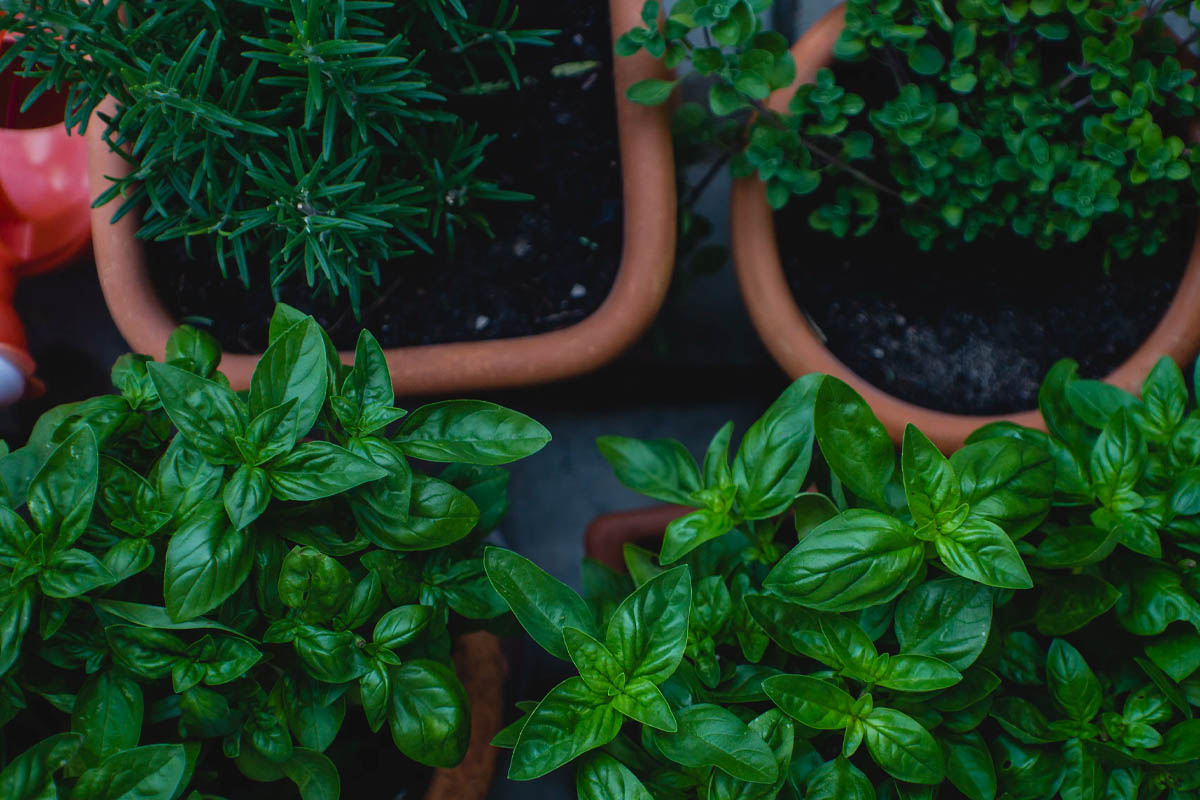
Create a thriving balcony garden with the companion planting technique.
Some plants flourish when planted in the presence of another. They can improve each other’s flavor, encourage growth, and help each other in deterring pesky insects. Companion planting also lends itself to a diverse range of plants coexisting in the same space, attracting pollinators and maintaining healthy soil conditions.
It’s wise to use this technique because it allows you to get the most use out of your gardening space. Because you can plant these friendly veggies close to each other, you can compact more plants in your containers.
The Three Sisters method is an example of effective companion planting. Plant corn, beans, and squash together. The pole beans climb the corn stalks, the beans provide nitrogen and save space by growing vertically, and the squash takes care of the ground by suppressing weeds and keeping moisture around the roots.
You can use the principles behind the Three Sisters technique even in your miniature garden.
When planning and planting your balcony garden, consider these friendly plant pairings to make the most of your space and encourage healthy produce production:
- Basil with tomatoes, thyme, garlic, and peppers
- Strawberries with mint, spinach, and lettuce
- Leeks with carrots and onions
- Carrots with sage, beans, and melons
- Broccoli with beans, oregano, rosemary, and chamomile
- Beans with dill, cauliflower, and cabbage
- Potatoes with basil and beans
- Chives with parsley, beets, and rhubarb
- Cucumbers with beans, cabbage, and radishes
Maximize Your Ecological Benefits
1. Compost
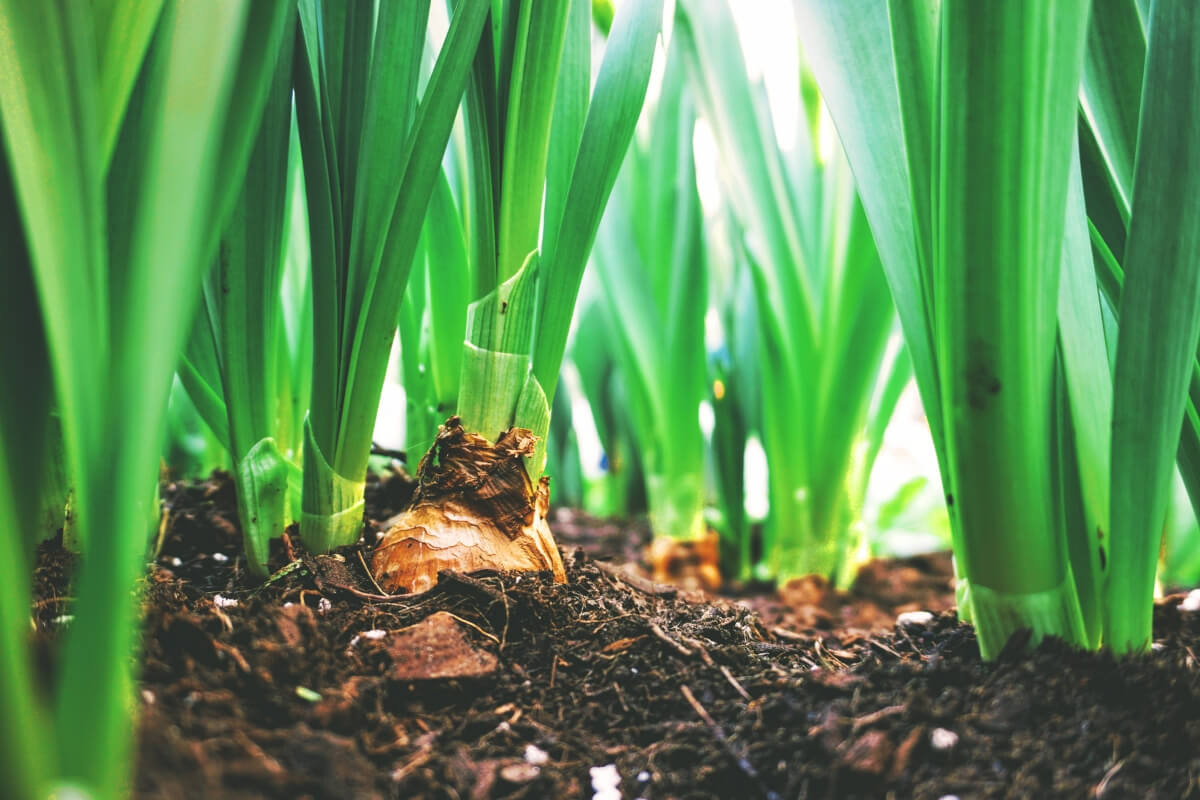
You bet you can compost on a balcony! Composting is an excellent option for supporting your plants. With food and yard scraps making up around 30 percent of waste, it’s also an environmentally friendly option of reducing your rubbish and making new life from leftovers.
Composting serves so many benefits for plants by adding nutrients to the soil, encouraging the production of beneficial bacteria and fungi, and reducing your reliance on fertilizers.
Grab a small trash can, some soil, and find an old bin you don’t use anymore to start building up your compost pile.
Produce, peels, seeds, and even newspaper scraps can create a healthy compost for your plants. Toss in some wet leaves and lawn clippings, too. Just leave out any animal products like meat or fat.
Finished compost will be dark, earthy, and crumbly. Add a half-inch layer of finished compost to the base of growing plants to give them a nutrient boost.
If you’re entirely new to composting, follow a helpful guide to get started and avoid any smelly mistakes in the process.
2. Stay Water Conscious
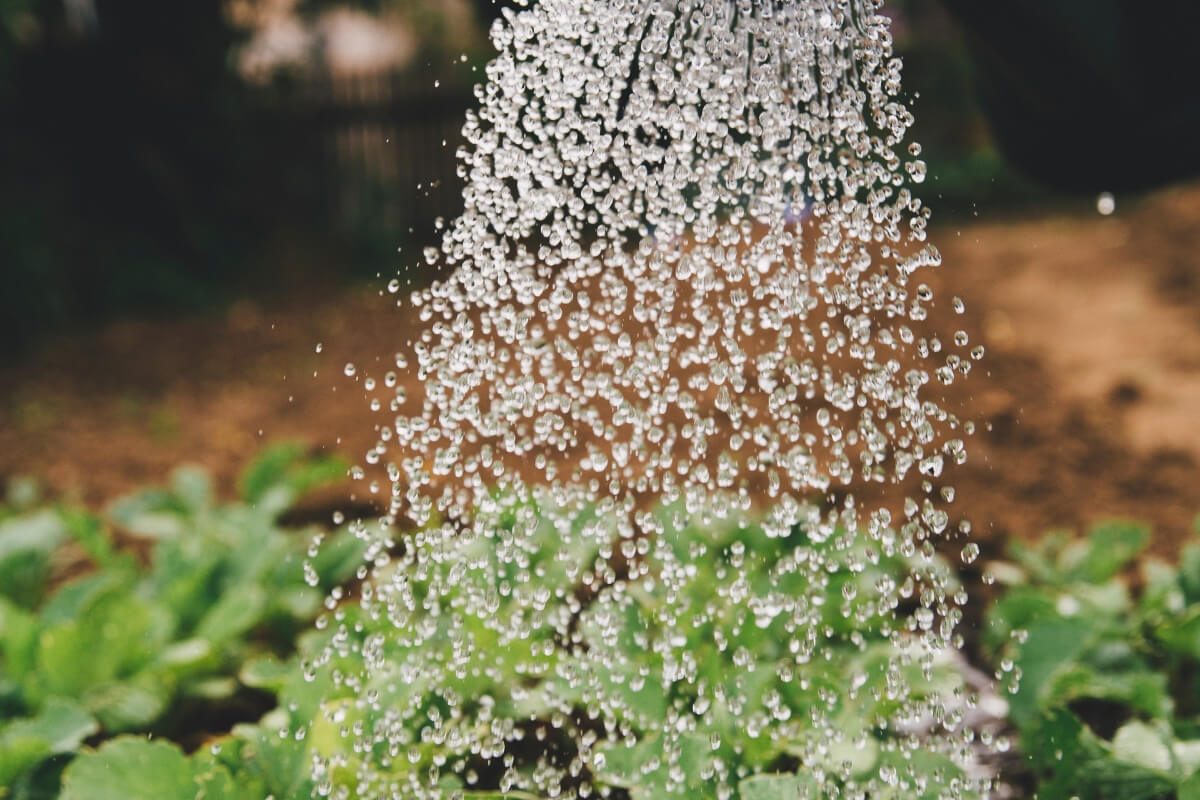
While there are so many benefits to growing a food garden, it does open up the potential for water waste if you’re not careful.
But there’s nothing to fret. Just be conscious of your water usage, and follow some easy tips to minimize waste:
- Water in the mornings or the coldest part of the day to limit evaporation
- Use mulch or compost to conserve water
- Fill containers with a soil that retains water
- If you’re ambitious, collect rainwater for future garden use
- Plant native plants or plants accustomed to your area’s temperatures and weather; they’ll be hardier, able to withstand tough conditions, and won’t require as much water
Don’t neglect your garden’s need for moisture! Just use good practices when watering to limit waste and get the most out of this precious resource.
3. Ditch the Chemicals
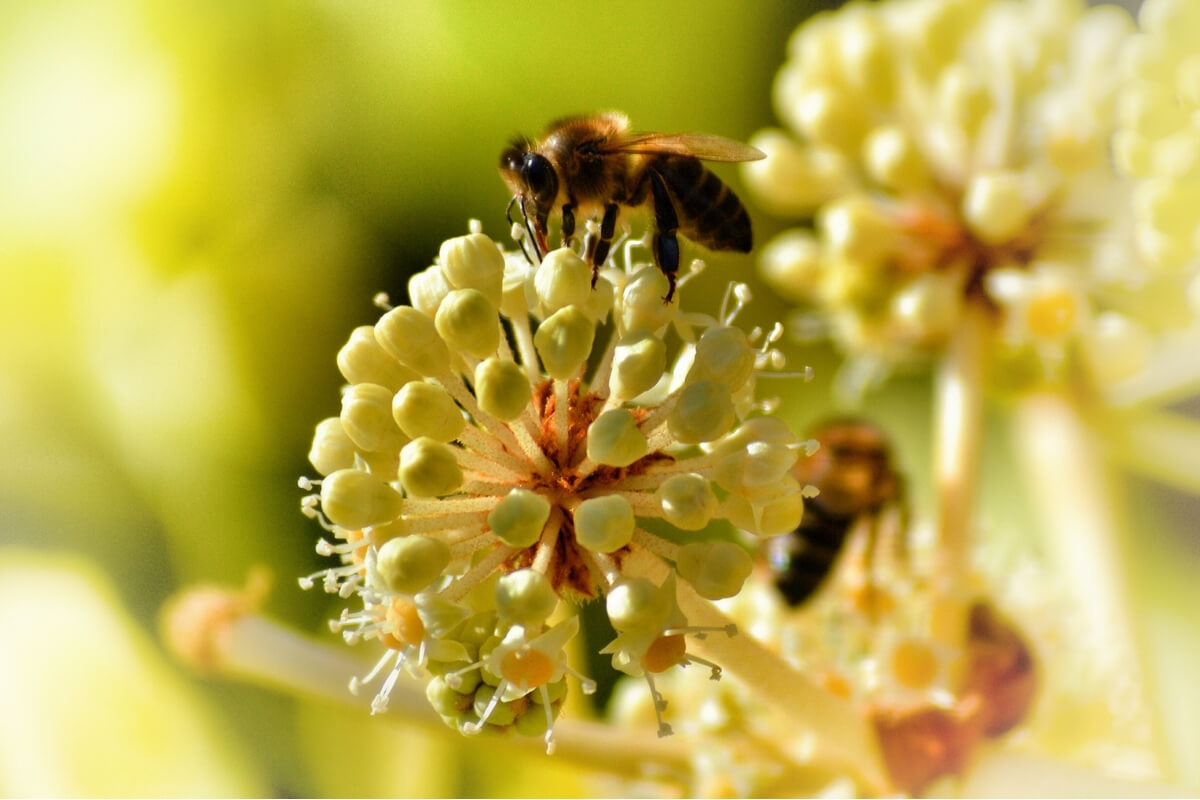
Sure, chemical pesticides might produce quick results, but you probably don’t want to ingest those same chemicals when your produce is ready for plucking.
Chemicals are overused and pose an environmental hazard. Instead, it’s worthwhile to investigate natural options. There are a lot of choices out there that provide effective means of knocking back the progress of unwanted insects.
Before you apply anything to your vegetables, do your research. Just because something is labeled natural doesn’t immediately mean it’s safe to ingest or spray on your plants. Be confident you’re choosing a potent and non-harmful option before you apply!
You can also delay the progress of irritating insects by maintaining healthy, fertile soil and encouraging the presence of beneficial bacteria and fungi. Your goal should never be to eliminate all insects from your pots and containers – this will disrupt your balcony’s ecosystem!
But if you need it, substances commonly used in natural insecticides include:
- Neem oil
- Vegetable oil
- Salt spray
- Mineral oils
- Mild soap sprays, such as castile
- Citrus oils
- Diatomaceous earth
- Eucalyptus oil
- Chile pepper
- Garlic
- Tomato leaf
As you develop your balcony gardening abilities, you might devise a homemade recipe using several of the options above. In the meantime, you can research proven combinations online or search for natural insecticides in stores.
4. Think Before Fertilizing
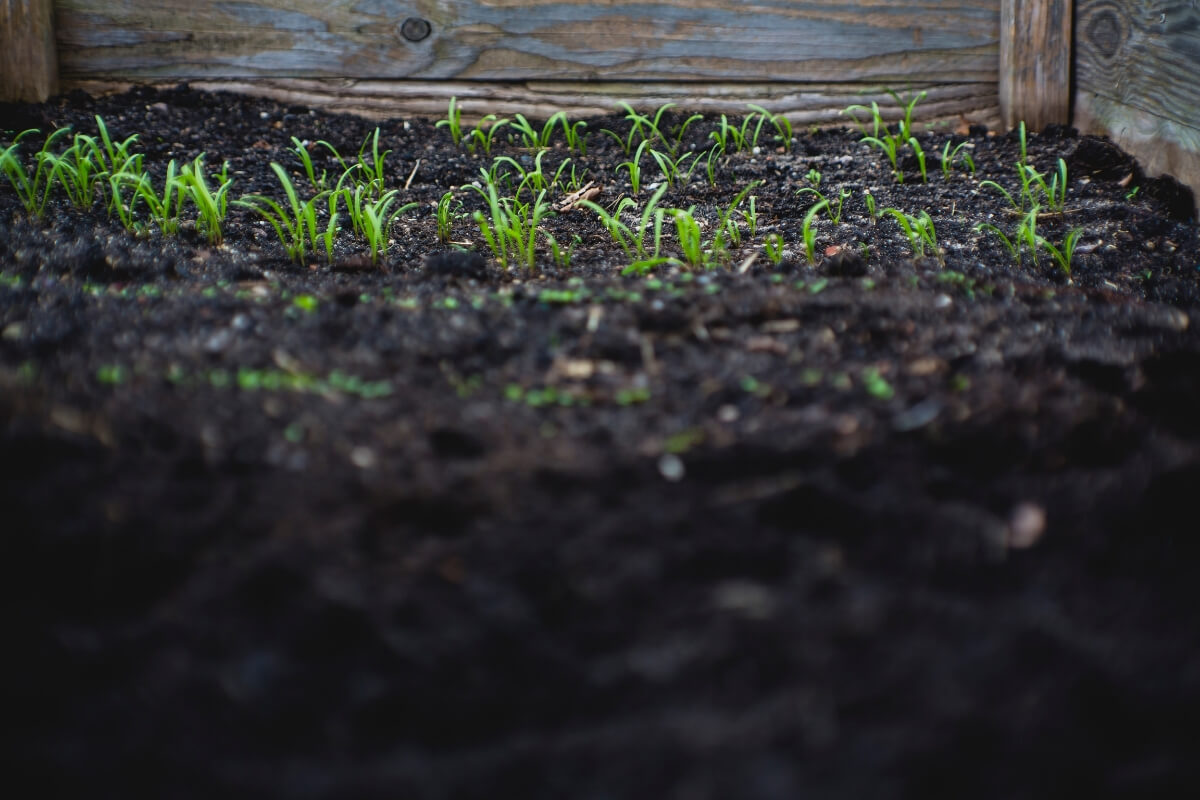
For beginning gardeners or those with a novice green thumb, it may be tempting to use artificial fertilizers. Don’t!
According to the American Chemical Society, artificial fertilizers containing nitrogen pose a significant threat to human and environmental health. There’s no need to use synthetic fertilizers when organic options can do the job.
As mentioned earlier, using compost is a powerful way to limit how often you need to fertilize. However, if you’re impatient to see prolific produce on your balcony and you’re seeking effective organic fertilizers, look to options like:
- Blood meal
- Seaweed fertilizers
- Bone meal
- Earthworm castings
Find the option that works best for your needs – some fertilizers work better for certain vegetables than others – and make the natural choice next time.
You might need to use natural fertilizers more frequently than synthetic versions, but the environmental benefits of organic options make them an easy choice.
5. Don’t Waste – Maintain and Taste
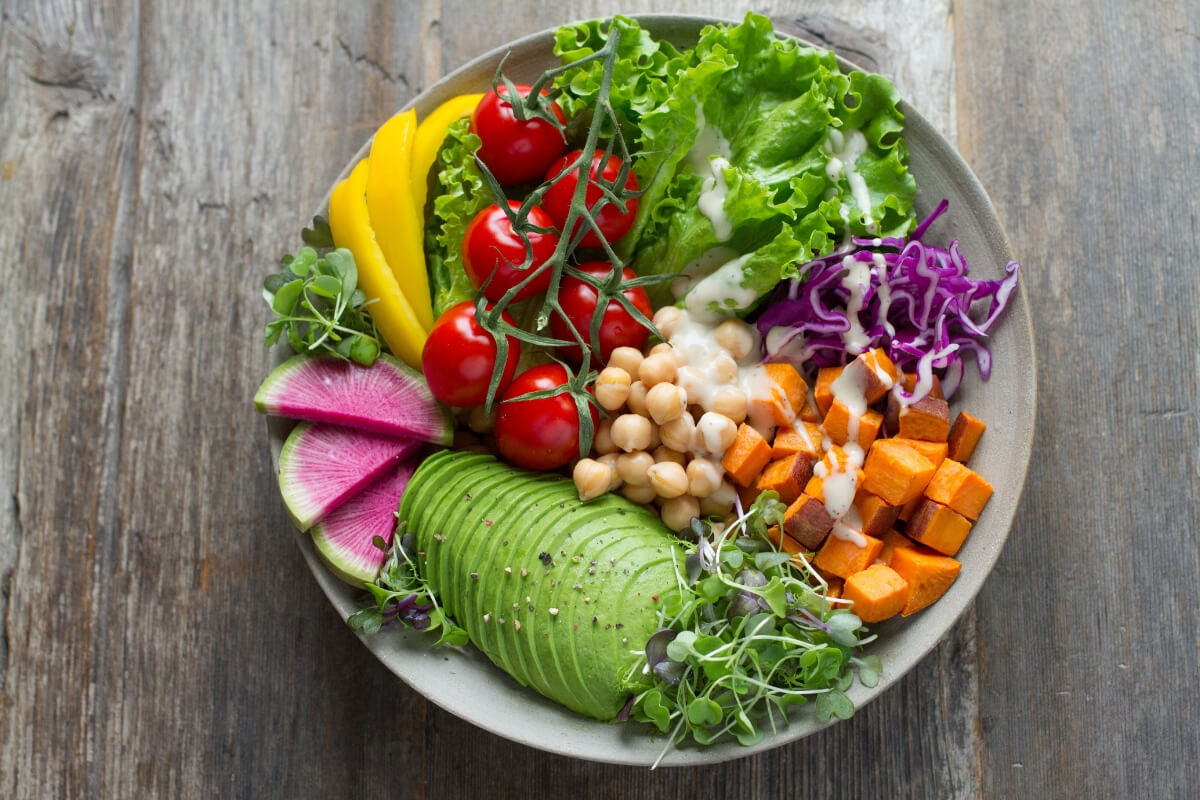
This may come as a no-brainer, but the health benefits and environmental efficiency of your garden will be lost if you waste your food.
When choosing plants for your balcony garden, don’t plant vegetables and herbs that you won’t use. Wasting them requires more resources than if you hadn’t planted in the first place!
And one of the best ways to ensure your plants don’t go to waste is through proper garden maintenance.
Dedicate a minimum of 15 minutes a day to deadheading, watering, clearing dead plants and debris, and pruning. Occasionally add time to fertilize or compost. This way, your containers keep producing and your hard work doesn’t go to waste.
If you’re wondering how you’ll possibly use all of the vegetables and herbs you grow on your balcony, be inventive! Search for vegetarian and vegan recipes or incorporate some of your veggies and herbs into a tasty side dish for a main entrée.
It’s Time to Grow!
Whether you’re an experienced urban farmer or trying to make do with a tiny balcony in a high-rise, growing your own food is never off-limits.
It’s an incredibly therapeutic activity that also comes with some mighty benefits for your health and the planet.
While it may feel overwhelming to start your balcony garden, breaking it down into easy-to-follow steps will have you producing delicious results in no time:
- When getting started, consider your growing conditions, gather the right supplies, grow vertically, upcycle if you can, and make a plan before you start
- Pick your plants by selecting healthy seedlings, choosing partial or full sun options based on your conditions, and maximizing space through companion planting
- Keep an environmentally friendly garden by composting, using less water, choosing natural insecticides, selecting organic fertilizers, and reducing waste through maintenance
The effort and planning will all be worth it when you prepare a dinner full of veggies that came from your hard work.
Time to get your hands in the dirt! What will you grow in your balcony garden?

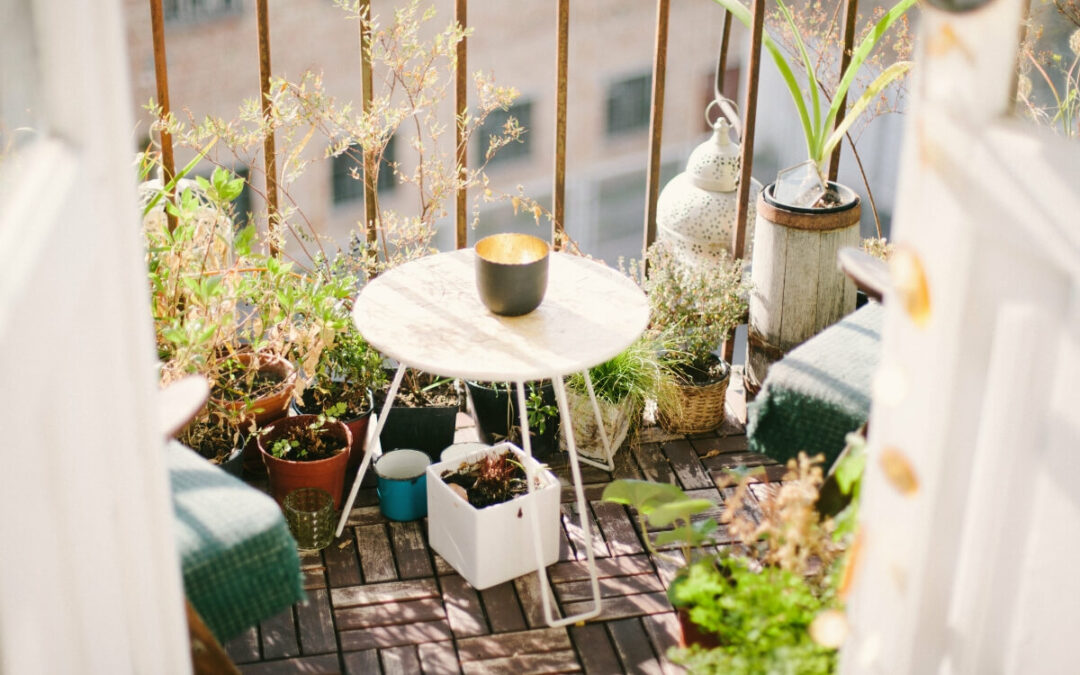

Lots of great tips in here that I will use for my patio garden! Ever since moving to the city I have been looking for ways to reconnect with nature. Awesome article!
Although I’m lucky to have plenty if space for gardening, your article makes me wish I had a balcony! You offer such thorough insights and ideas that anyone who follows them should enjoy great gardening success.
Very informative article with excellent, practical tips! As a Master Gardener, I give talks on this subject and found some new ideas I can share with others. Thanks!!
Loved the article! Thanks for the tips. I would love to learn more about the three sisters concept. We also watch for native species and cat friendly species- because- Kitties! Great advice and food for thought!